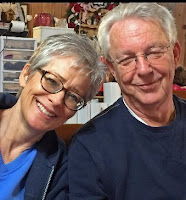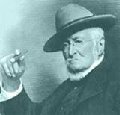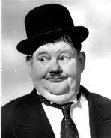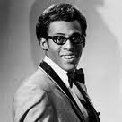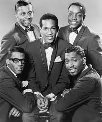
A flashlight (US, CA) or torch (UK, AU) is a portable hand-held electric lamp. Formerly, the light source typically was a miniature incandescent light bulb, but these have been displaced by light-emitting diodes (LEDs) since the mid-2000s. A typical flashlight consists of the light source mounted in a reflector, a transparent cover (sometimes combined with a lens) to protect the light source and reflector, a battery, and a switch, all enclosed in a case.
The invention of the dry cell and miniature incandescent electric lamps made the first battery-powered flashlights possible around 1899. Today, flashlights use mostly light-emitting diodes and run on disposable or rechargeable batteries. Some are powered by the user turning a crank, shaking the lamp, or squeezing it. Some have solar panels to recharge the battery. Flashlights are used as a light source outdoors, in places without permanently installed lighting, during power outages, or when a portable light source is needed.
In addition to the general-purpose, hand-held flashlight, many forms have been adapted for special uses. Head- or helmet-mounted flashlights designed for miners and campers leave the hands free. Some flashlights can be used under water or in flammable atmospheres.
Early flashlights ran on zinc–carbon batteries, which could not provide a steady electric current and required periodic "rest" to continue functioning. Because these early flashlights also used energy-inefficient carbon-filament bulbs, "resting" occurred at short intervals. Consequently, they could be used only in brief flashes, hence the common North American name "flashlight".
The first dry cell battery was invented in 1887. Unlike previous batteries, it used a paste electrolyte instead of a liquid. This was the first battery suitable for portable electrical devices, as it did not spill or break easily and worked in any orientation. The first mass-produced dry cell batteries came in 1896, and the invention of portable electric lights soon followed. Portable hand-held electric lights offered advantages in convenience and safety over (combustion) torches, candles and lanterns. The electric lamp was odorless, smokeless, and emitted less heat than combustion-powered lighting. It could be instantly turned on and off, and avoided fire risk.
On January 10, 1899, British inventor David Misell obtained U.S. Patent No. 617,592, assigned to American Electrical Novelty and Manufacturing Company. This "electric device" designed by Misell was powered by "D" batteries laid front to back in a paper tube with the light bulb and a rough brass reflector at the end. The company donated some of these devices to the New York City police, who responded favorably to them.
Carbon-filament bulbs and fairly crude dry cells made early flashlights an expensive novelty, with low sales and low manufacturer interest. Development of the tungsten-filament lamp in 1904, with three times the efficacy of carbon filament types, and improved batteries, made flashlights more useful and popular. The advantage of instant control, and the absence of flame, meant that hand-held electric lights began to replace combustion-based lamps such as the hurricane lantern. By 1922 several types were available; the tubular hand-held variety, a lantern style that could be set down for extended use, pocket-size lamps for close work, and large reflector searchlight-type lamps for lighting distant objects. In 1922 there were an estimated 10 million flashlight users in the United States, with annual sales of renewal batteries and flashlights at $20 million, comparable to sales of many line-operated electrical appliances. Flashlights became very popular in China; by the end of the 1930s, 60 companies made flashlights, some selling for as little as one-third the cost of equivalent imported models. Miniature lamps developed for flashlight and automotive uses became an important sector of the incandescent lamp manufacturing business.
LED flashlights were made in the early 2000s. Maglite made their first LED flashlight in 2006.
If you want to keep read more, go here: https://en.wikipedia.org/wiki/Flashlight
- 4 (4 to 6-ounce each) frozen tilapia fish fillets
- 1 (8-ounce) bag frozen salad shrimp, slightly thawed and coarsely chopped
- 1/2 cup Italian breadcrumbs
- 1 teaspoon chopped fresh parsley
- 1/2 teaspoon garlic powder
- 3 tablespoons butter, melted
- 1 (7.5-ounce) box frozen asparagus spears
- 1 (0.9-ounce) packet Hollandaise sauce, prepared according to package directions
- paprika for sprinkling
- Preheat the oven to 350º. Coat a rimmed baking sheet with cooking spray. Place fish fillets on prepared baking sheet.
- In a medium bowl, combine shrimp, breadcrumbs, parsley, garlic powder, and butter, mix well.
- Top each fish fillet with an equal amount of shrimp mixture then asparagus. Drizzle half the Hollandaise sauce evenly over the asparagus and sprinkle with paprika. Bake for 20 to 25 minutes or until fish flakes easily with a fork. Heat remaining Hollandaise sauce on low until hot and serve over fish.
***If tilapia is not your fish-of-choice, go ahead and substitute another white-flesh fish in this recipe. Even if it is, try another fish fillet next time for a variation on this simple and elegant meal
1944 – The Metropolitan Opera House in New York City hosts a jazz concert for the first time. The performers are Louis Armstrong, Benny Goodman, Lionel Hampton, Artie Shaw, Roy Eldridge and Jack Teagarden.
1990 – Washington, D.C. Mayor Marion Barry is arrested for drug possession in an FBI sting.
1813 – Joseph Glidden, American farmer who patented barbed wire (d. 1906)
1882 – A. A. Milne, English author (d. 1956)
1892 – Oliver Hardy, American comedian and actor (d. 1957)
1904 – Cary Grant, English actor (d. 1986)
1913 – Danny Kaye, American actor (d. 1987)
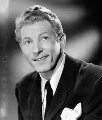
1941 – David Ruffin, American singer (The Temptations) (d. 1991)
1955 – Kevin Costner, American actor
National Winnie the Pooh Day on January 18th commemorates author A.A. Milne’s birthday in 1882. He brought the adorable, honey-loving bear to life in his stories, which also featured his son, Christopher Robin.
Milne’s lovable Pooh Bear, as he was fondly called, is a fictional bear inspired by a black bear named Winnie. Winnie lived at the London Zoo during World War I. The author’s son, Christopher Robin, would visit the bear often and named his own teddy bear after her and a swan named Pooh.
This friendship inspired a collection of books starting with Winnie-the-Pooh in 1926. E.H. Shepard beautifully illustrated the books.
Their adventures took them and millions of children through the Hundred Acre Woods. Each character played a unique role in the books. Whether the wisdom of Owl or Rabbit lead the group awry or a celebration ensued, the story’s characters became beloved around the world.
In the 1960s, Disney bought the rights to the Winnie-the-Pooh characters dropping the hyphen from Pooh’s name. The illustrations were a bit different, too.
Milne’s stories have been translated into over 50 languages and are considered classic children’s stories today.
HOW TO OBSERVE
Snuggle up with your favorite Pooh fan, a pot of honey, and take turns reading about the adventures of Winnie the Pooh. Share your favorite Pooh Bear adventure or quote. Watch a Winnie the Pooh movie. Listen to songs like “Return to Pooh Corner” by Kenny Loggins.
NATIONAL WINNIE THE POOH DAY HISTORY
Since at least 1986, National Winnie The Pooh Day has been observed across the country. However, we’ve been unable to identify the founder of the day. We will continue researching.





